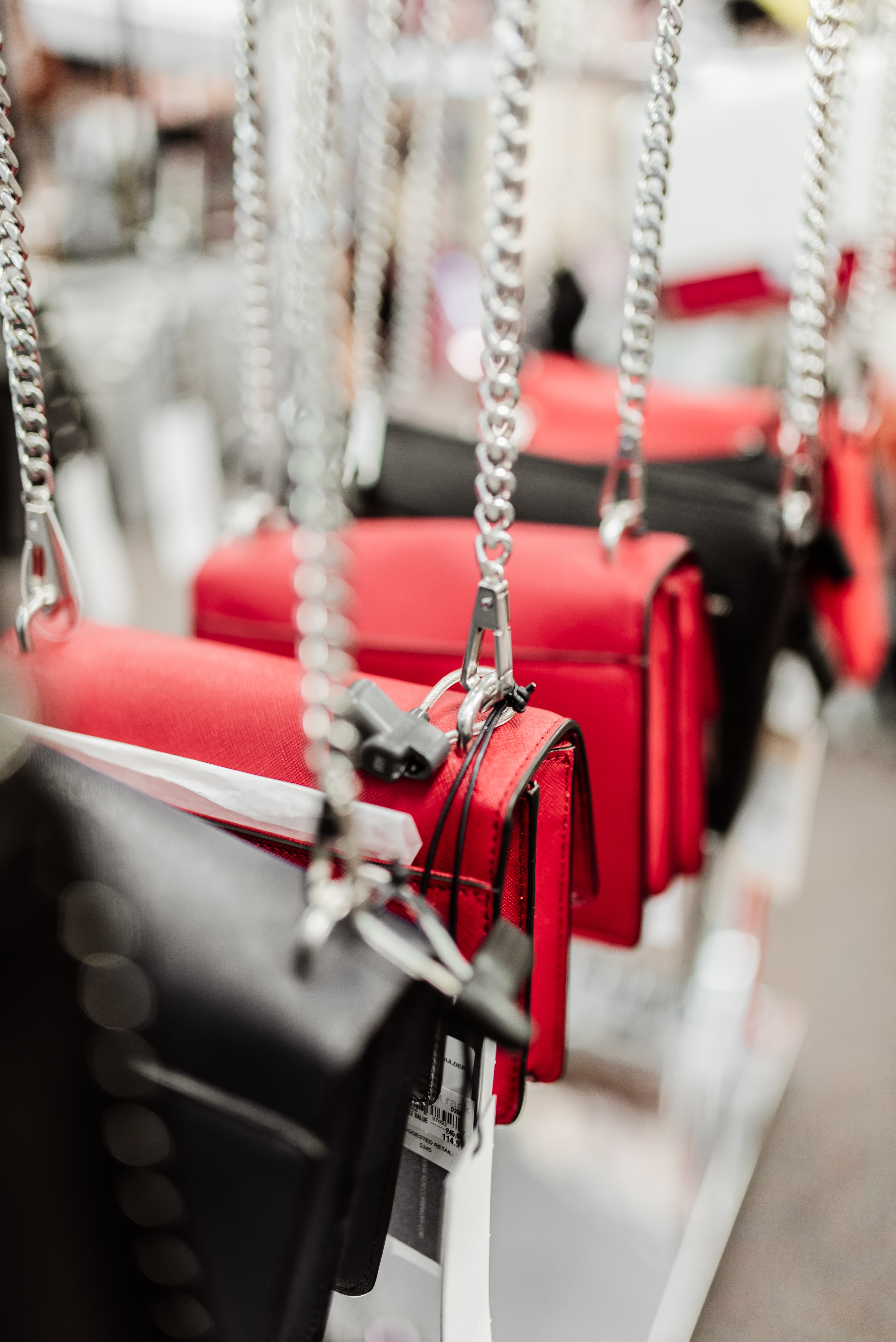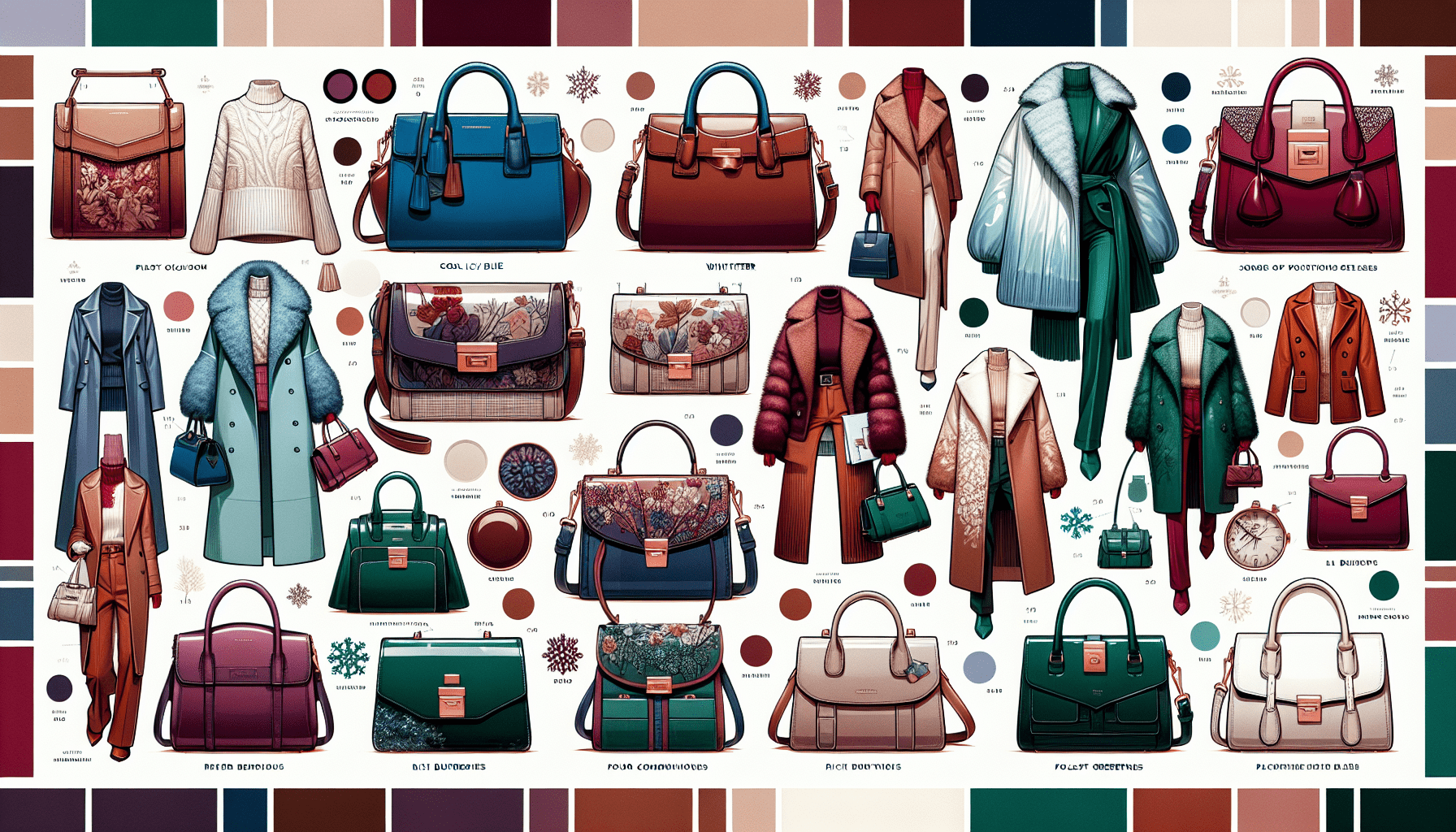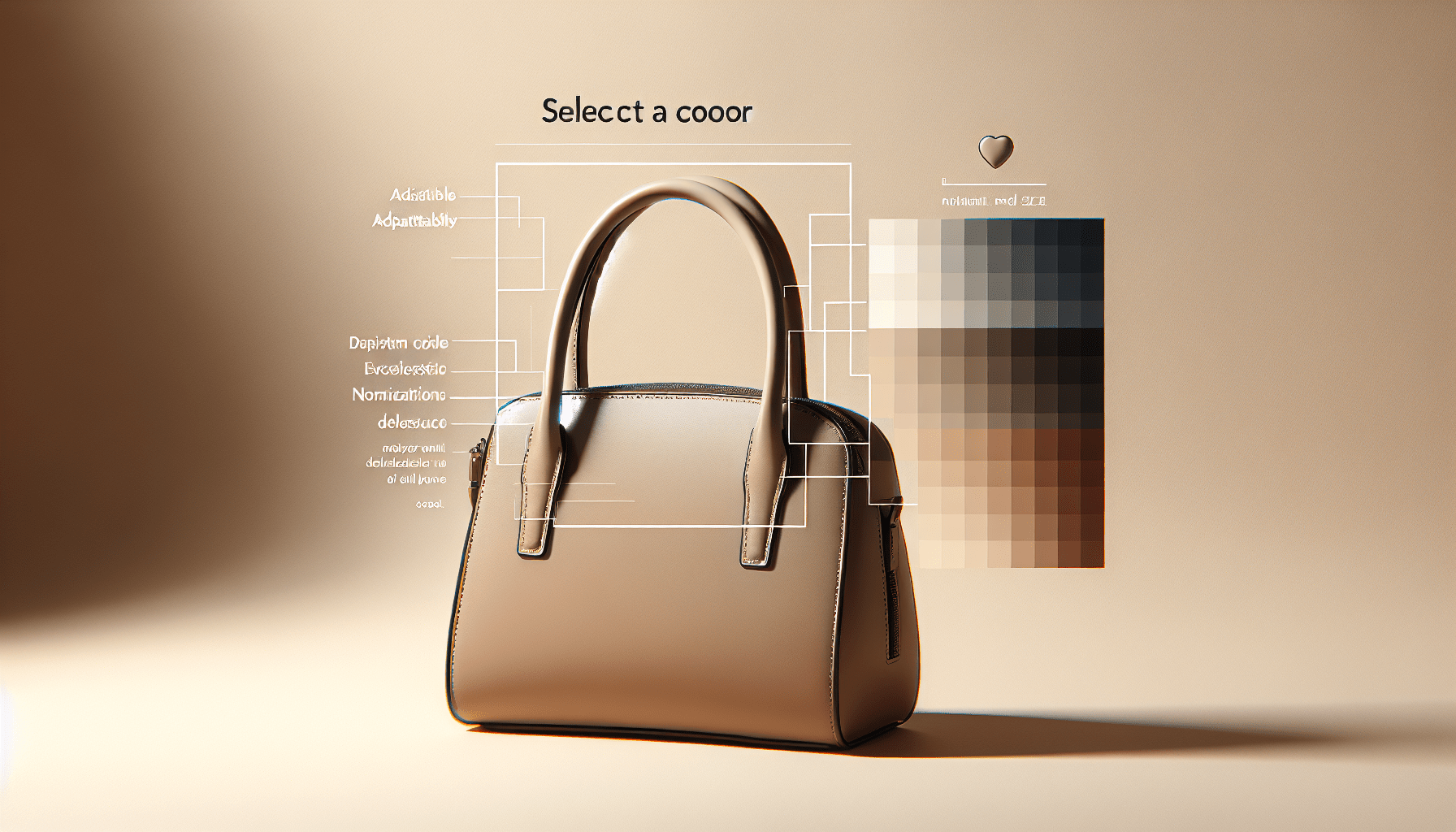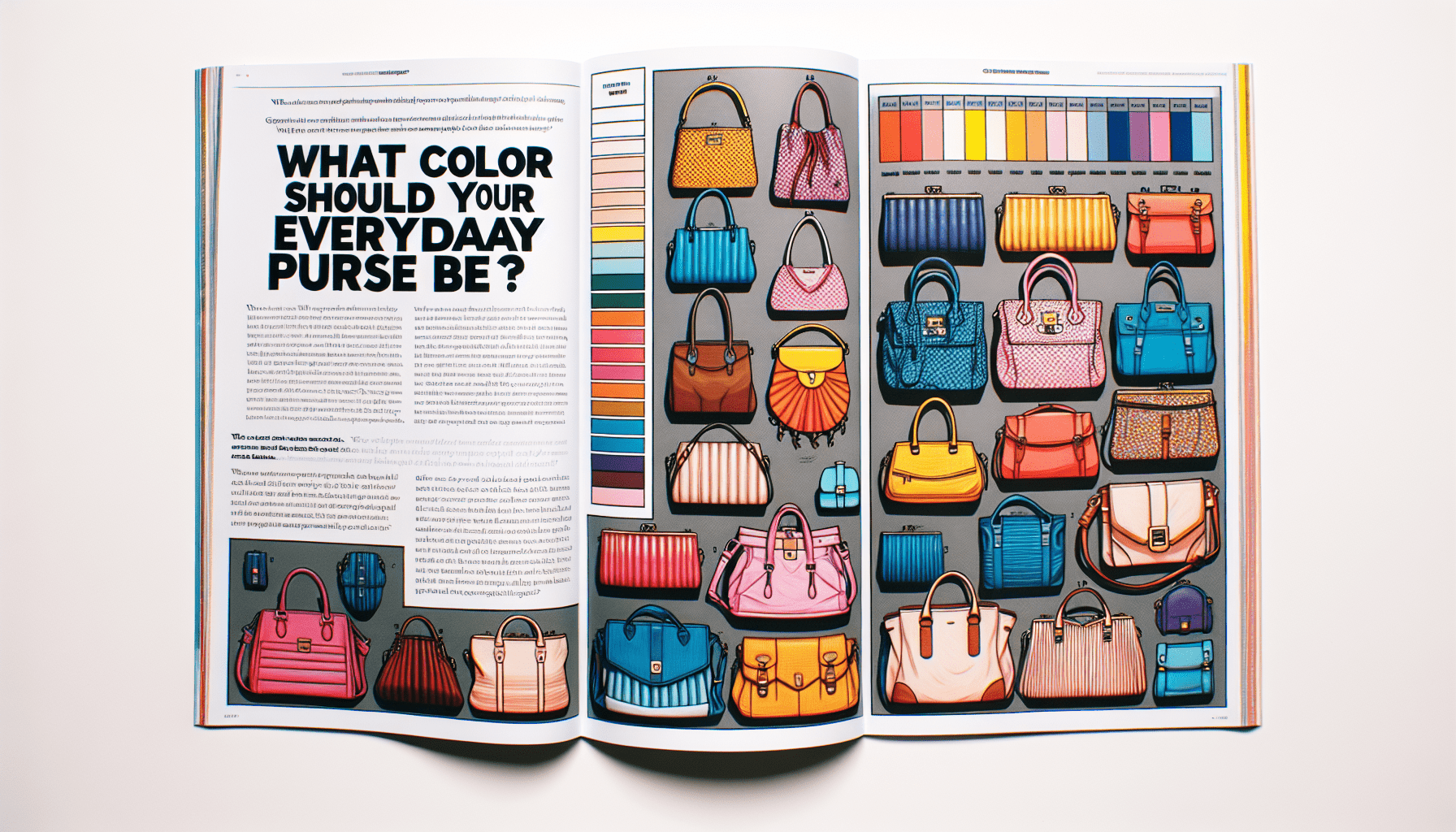The Evolution of Handbags: A Reflection of Social and Cultural Trends
Imagine a world without handbags. It might seem strange, but these accessories have become an essential part of everyday life for many people. From the humble beginnings of carrying necessities in a pouch tied to the waist, the evolution of handbags has mirrored the changing social and cultural trends throughout history. These stylish accessories not only serve a functional purpose but also make a statement about one’s identity and status. Discover how handbags have transformed over time and how they continue to shape our society today.

This image is property of images.unsplash.com.
Evolution of Handbags: A Reflection of Social and Cultural Trends
Handbags have been a staple accessory for centuries, not only serving a practical purpose but also acting as a reflection of social and cultural trends. Over time, these fashion accessories have evolved alongside the changing needs and desires of society, adapting to the various eras and playing a significant role in fashion history. From the early origins of handbags to the rise of luxury brands in the digital age, the evolution of handbags tells a captivating story of societal shifts and cultural influences.
Early Origins of Handbags
Introduction to Handbags
the development of handbags can be traced back to ancient times when humans began to recognize the need for a portable bag to carry essentials. As society evolved, so did the size, design, and functionality of these early handbags.
Ancient Handbags and Pouches
In ancient civilizations such as Egypt, Mesopotamia, Greece, and Rome, handbags were primarily made from natural materials such as animal skins, leather, and fabric. These early handbags served practical purposes, allowing individuals to carry personal belongings, money, and tools.
Materials and Techniques Used
The materials and techniques utilized in handbag production varied across different cultures and eras. Early handbags were crafted using basic sewing techniques and adorned with intricate embroidery or beading. As societies advanced, so did the craftsmanship and the materials used, with more elaborate designs featuring metalwork, gemstones, and even precious metals.
Symbolism and Purpose of Early Handbags
Aside from their practical use, early handbags also held symbolic meaning. They were seen as an indication of wealth, social standing, and personal style. The contents of a handbag often reflected the individual’s status and lifestyle, making it a significant reflection of their social and cultural identity.
The Role of Handbags in Ancient Civilizations
Egyptian Handbags
In ancient Egypt, handbags were not only practical accessories but also held spiritual significance. The Egyptians believed that carrying amulets and charms in their handbags could bring protection and good fortune. These handbags were often made from woven reeds or fabric, featuring intricate patterns and embellishments.
Mesopotamian Handbags
Mesopotamian handbags were highly functional and versatile, designed to carry various items for daily life. They were made from leather and fabric, featuring intricate detailing and embellishments. The designs often incorporated symbolism associated with religious beliefs and societal customs.
Greek and Roman Handbags
In ancient Greece and Rome, handbags took on a more ornate and decorative form. They were crafted from luxurious materials such as silk, linen, and leather, adorned with intricate embroidery and embellishments. These handbags were often carried by wealthy individuals as a status symbol and were considered an essential accessory for social gatherings and events.
Cultural Significance of Ancient Handbags
In ancient civilizations, handbags played a significant role in society, representing status, wealth, and social standing. The design, materials, and embellishments of these handbags reflected the cultural values and artistic expressions of the time. They were not just a means to carry personal belongings; they were also a powerful symbol of identity and societal hierarchy.
Handbags as Status Symbol in Renaissance Europe
Evolution of Handbags in Renaissance Europe
During the Renaissance period in Europe, handbags underwent significant changes in design, materials, and functionality. The emergence of trade and exploration led to the introduction of exotic materials such as velvet, brocade, and tapestry, which were used to create extravagant handbags for the wealthy elite.
Royal Influence on Handbag Trends
Royalty played a vital role in influencing handbag trends during the Renaissance. Queen Elizabeth I of England, for example, popularized ornate handbags adorned with jewels and embroidery, setting a trend among the nobility. Handbags became a symbol of affluence and high social standing, with elaborate designs serving as an outward display of wealth and power.
Handbag Design and Materials
Handbag design during the Renaissance was characterized by opulent embellishments and intricate needlework. The materials used ranged from leather and fabric to silk and velvet, often complemented by gold or silver thread embroidery. Handbags became larger in size and featured multiple compartments to accommodate various items.
Social Class and Handbag Ownership
Owning a handbag during the Renaissance was a privilege reserved for the upper classes. The elaborate designs, expensive materials, and skilled craftsmanship required to create these handbags made them inaccessible to the lower classes. Handbags served as a visible marker of social status, allowing the upper class to showcase their wealth and differentiate themselves from the rest of society.

This image is property of images.unsplash.com.
Handbags During Industrialization
Impact of Industrial Revolution on Handbag Manufacturing
The Industrial Revolution brought about significant changes in various industries, including the manufacturing of handbags. With the introduction of mechanized production processes, handbags became more affordable and accessible to the middle class.
Innovation in Handbag Design
During the industrialization era, innovative techniques and machinery allowed for greater efficiency in handbag production. Designers and manufacturers were able to experiment with new shapes, styles, and materials, catering to the changing tastes and demands of consumers.
Middle-Class Accessibility to Handbags
As mass production reduced the cost of handbags, they became increasingly accessible to the middle class. This shift in affordability led to a rise in handbag ownership among a broader spectrum of society, blurring the lines between social classes and challenging the traditional notions of luxury and exclusivity.
Emergence of New Styles and Shapes
The industrialization era saw the emergence of new handbag styles, such as the reticule and the chatelaine. These were smaller, more compact bags designed to carry essentials such as money, keys, and cosmetic items. The focus shifted towards utility and convenience while still reflecting the prevailing fashion trends of the time.
The Rise of Department Stores and Mass Production
Department Stores and Handbag Retailing
The rise of department stores in the late 19th and early 20th centuries revolutionized the retail industry, including handbag sales. These large-scale retail establishments offered a wide range of handbag choices under one roof, catering to the growing demand for fashionable accessories.
Introduction of Mass Production
Mass production techniques and assembly lines allowed for the efficient production of handbags in large quantities. This not only reduced manufacturing costs but also made handbags more affordable for the average consumer. As a result, handbags transitioned from being luxury items to everyday accessories.
Fashion and Advertising Influence
Department stores played a critical role in promoting handbags as fashion accessories. They encouraged consumers to embrace the latest trends and showcased the versatility of handbags to complement different outfits and occasions. Advertising campaigns and fashion magazines further heightened the desirability of owning multiple handbags to cater to various fashion preferences.
Standardization of Handbag Styles
Mass production and the influence of department stores led to the standardization of handbag styles. Handbags became more uniform in shape and size, making them easier to produce and market on a large scale. While variations existed, the focus shifted towards producing handbags that appealed to the widest possible audience.

This image is property of images.unsplash.com.
Handbags in the Roaring Twenties
Art Deco and the Flapper Era
The 1920s, often referred to as the Roaring Twenties, were a time of dramatic social change and cultural revolution. Handbags of this era reflected the newfound freedom and liberation of women, influenced by the rise of the flapper style and the iconic Art Deco movement. Handbags became more streamlined and functional, embracing the modern aesthetic.
The Impact of World War I
World War I played a significant role in shaping handbag designs during the 1920s. With many men serving in the war, women took on new roles and responsibilities, resulting in a transformation of fashion and gender norms. Handbags became more practical and compact, reflecting the changing needs and lifestyles of women during this time.
Handbags as Fashion Accessories
Handbags in the Roaring Twenties became more than just a functional accessory; they became an integral part of the overall fashion statement. They were designed to match the new trend of short flapper dresses, featuring beaded embellishments and fringe details. Handbags were no longer hidden away but were proudly displayed as fashionable accessories.
Popular Styles of the 1920s
During the 1920s, popular handbag styles included the clutch, the minaudière, and the pochette. These smaller, sleeker designs complemented the flapper style, allowing women to carry their essentials while dancing the night away. The materials used ranged from luxurious silk and velvet to beaded and sequined fabrics.
Handbags in the Post-War Era
Rebuilding Fashion Industry after World War II
The post-war era marked a significant shift in handbag design and manufacturing. As countries rebuilt after World War II, fashion became a symbol of optimism and prosperity. Handbags became larger and more functional, reflecting the changing needs and aspirations of women in a rapidly evolving world.
Changes in Handbag Materials
During the post-war era, handbags began to incorporate new materials such as plastic, vinyl, and synthetic fabrics. These materials were more durable, affordable, and offered a wider range of colors and textures. Handbags became more accessible to a broader range of consumers, catering to different budgets and lifestyles.
Influence of Hollywood and Celebrities
Hollywood and the rise of celebrity culture played a significant role in shaping handbag trends in the post-war era. Actresses and style icons became influential figures, and their choice of handbags was closely followed by the general public. Handbags carried by movie stars on and off the screen became highly sought after, driving sales and shaping consumer preferences.
Handbags as Symbols of Post-War Prosperity
In the post-war era, handbags became symbols of post-war peace, prosperity, and stability. They represented the newfound freedom and independence of women, as well as the desire for a more comfortable and functional lifestyle. Handbags were no longer just accessories; they became powerful symbols of a changing society.
The Feminist Movement and Handbags
Changing Role of Women in Society
The feminist movement of the 1960s and 1970s brought about significant changes in social and cultural norms, including the role of women in society. Women sought equality, breaking away from traditional gender roles and expectations. This shift in mindset and beliefs had an impact on fashion, including the design and perception of handbags.
Women’s Liberation and Handbag Preferences
During the feminist movement, women began to question and challenge societal norms, including their preferences in handbags. Traditional notions of femininity and the expectations associated with it were rejected. Many women opted for handbags that prioritized functionality, practicality, and comfort over purely aesthetic considerations.
The Power Bag Phenomenon
The feminist movement also gave rise to the “power bag” phenomenon. Women wanted handbags that conveyed confidence, professionalism, and success. Large, structured, and often designer handbags became symbolic of women’s determination to break barriers in the workplace and assert their presence in traditionally male-dominated environments.
Handbag Design Reflecting Feminist Ideals
Handbag design began to incorporate elements that reflected feminist ideals. Practicality, versatility, and functionality were emphasized, with the inclusion of multiple compartments, pockets, and organizational features. Handbags became tools for empowerment, enabling women to navigate their daily lives while juggling various responsibilities.
Designer Handbags and Luxury Brands
Rise of the Designer Handbag
The latter half of the 20th century witnessed the rise of designer handbags and luxury brands. Designers such as Coco Chanel, Gucci, and Louis Vuitton became synonymous with high-quality craftsmanship and iconic designs. Handbags became coveted symbols of luxury, exclusivity, and status.
Evolution of Luxury Brand Handbags
Designer handbags evolved with changing fashion trends and consumer preferences. The designs became more diverse, ranging from classic and timeless styles to bold and avant-garde creations. Luxury brands incorporated innovative materials, techniques, and collaborations to capture the attention of discerning consumers.
Celebrity Endorsements and Brand Influence
Celebrity endorsements played a crucial role in the popularity and desirability of luxury handbags. Celebrities were often seen carrying iconic designer bags, giving rise to the concept of “It Bags.” These highly sought-after handbags became the must-have accessory, with waiting lists and long queues outside stores becoming the norm.
The Rise of Counterfeit Handbags
As designer handbags became more desirable and exclusive, the market for counterfeit handbags also grew. Counterfeiters attempt to imitate the designs and logos of luxury brands, often deceiving unsuspecting consumers. The prevalence of counterfeit handbags highlights the enduring allure and social status associated with owning a luxury designer bag.
The Digital Age and Handbag Trends
Impact of Social Media on Handbag Culture
The digital age and the rise of social media platforms have had a significant impact on handbag culture. Fashion influencers and bloggers share their handbag collections, styling tips, and reviews on these platforms, shaping consumer preferences and driving trends.
E-commerce and Online Luxury Shopping
The advent of e-commerce opened up new avenues for purchasing handbags. Consumers can now browse and buy handbags from the comfort of their homes, with online luxury retailers offering a wide range of options. Virtual shopping experiences, detailed product descriptions, and customer reviews have made online luxury shopping more convenient and accessible.
Sustainability and Ethical Manufacturing
In recent years, there has been a growing awareness and concern for sustainability and ethical manufacturing practices within the fashion industry, including handbag production. Many brands are now incorporating environmentally friendly materials and adopting ethical sourcing and production methods. Consumers are increasingly considering these factors when making purchasing decisions.
Emergence of Technologically Smart Handbags
With advances in technology, handbags have also embraced innovation. Technologically smart handbags now exist, featuring features such as built-in phone chargers, Bluetooth connectivity, and GPS tracking. These handbags combine fashion and functionality, appealing to tech-savvy consumers looking for a seamless integration of technology into their everyday lives.
In conclusion, the evolution of handbags tells a captivating story of societal shifts and cultural influences. From ancient civilizations to the modern digital age, handbags have adapted to reflect the changing needs, desires, and values of society. They have gone beyond mere accessories, becoming symbols of status, empowerment, and self-expression. As fashion continues to evolve, handbags will undoubtedly remain an essential reflection of social and cultural trends.





